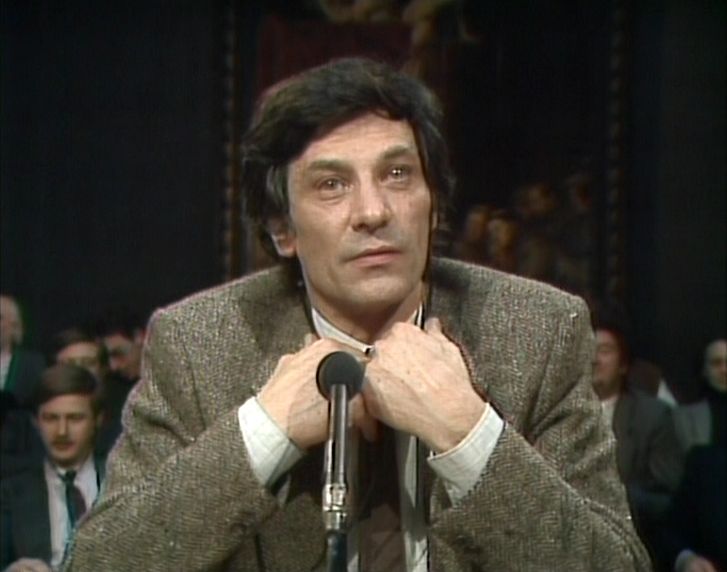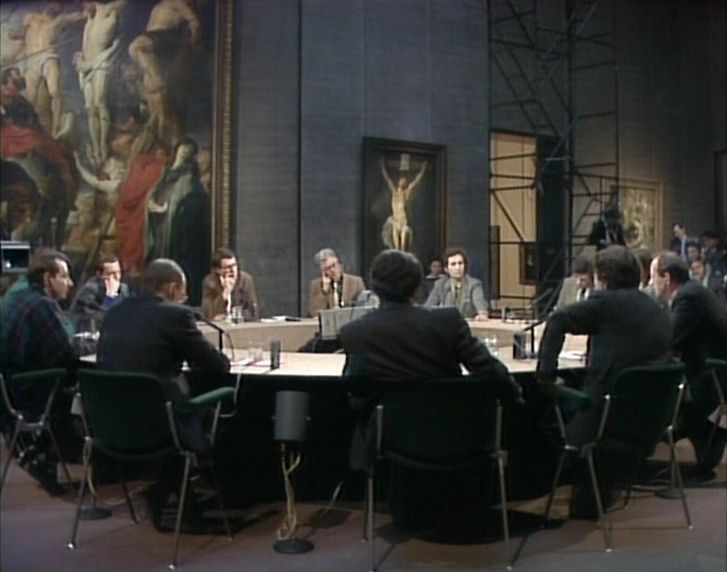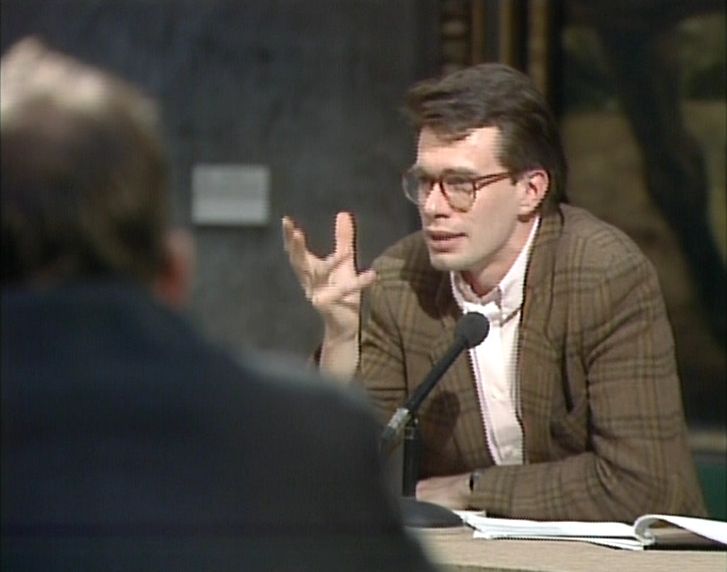Beeldende kunst in België, 1986

Original format
Color
Color system
Languages
Availability
Originally broadcast on March 16th 1986, the programme Beeldende kunst in België, 1986 (Visual Art in Belgium, 1986) is a recording of a panel discussion that took place in the Royal Museum of Fine Arts in Antwerp. To a certain extent, the programme is a prequel to De langste dag (1986), a live broadcast of more than 6 hours that dissected the opening of two - now legendary - art manifestations, Initiatief ’86 and Chambres d’amis in Ghent. Chris Dercon (°1958), who at the time was a fix collaborator of Cornelis, leads an international panel in which renowned art curators and critics participate — such as Barry Barker (°1948), Bernard Blistène (°1955), Laurent Busine (°1952), Bice Curiger (°1948), Jan Debbaut (°1949), Frans Haks (1938-2006), Jan Hoet (1936- 2014), Kasper König (°1943), Bernard Marcelis (°1953), Jean-Hubert Martin (°1944) and Wim Van Mulders (°1946). As all of them are involved to a different extent with Belgian art, they are asked to discuss and answer an apparently fundamental question: “What is the significance of the phenomenon of visual arts in Belgium in 1986?” But the story turns to be more complicated. Dercon asks the panel members to put the new interest in Belgian art in a broader context and to evaluate the promotional tools that the regional governments have set up. Did curators and critics change their view of Belgian art? Or is it due to a new approach of the Belgian artistic scene? Or is it a matter of the quality of the works of art? Each panel member provides his own view and story about the thriving of the Belgian art at the international art scene.
In the end, it is Barry Barker who perhaps articulates the final verdict: “What worries me about this conversation is that you’ve started by talking about television. Television is very good at narratives [...] and once you get from there, that’s what you’ve been asking us all the evening [...] tell us a story, which is the story of the Belgian art, but I don’t think that’s the situation at all. [...] I think the storytelling is a very difficult situation.”
Original broadcast date: 16/03/1986



